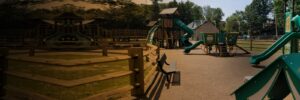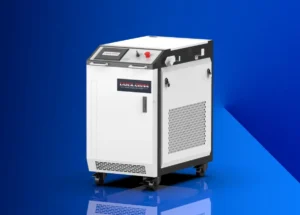
Maintaining the strength and durability of a building or infrastructure is essential for safety and longevity. Repair and rehabilitation of structures play a critical role in addressing damages caused by age, environmental factors, or structural failures. Timely intervention not only restores the original performance of a structure but also ensures safety for occupants and users. Structural repair involves systematic inspection, identifying weak points, and applying suitable solutions tailored to the building type and material.
Importance of Structural Repair
Structural damage can compromise the safety of a building or infrastructure. Factors such as natural wear and tear, heavy traffic loads, earthquakes, water leakage, or chemical exposure can deteriorate concrete, steel, or masonry components. Repair and rehabilitation of structures help prevent potential hazards and extend the lifespan of the structure. By addressing cracks, corrosion, or foundation issues promptly, property owners can save on costly replacements and avoid severe accidents or failures.
Common Types of Structural Damage
Buildings and infrastructure often face varied types of damage, including cracks in concrete walls, spalling, corrosion of steel reinforcement, foundation settlement, and water seepage. Understanding the specific type of damage is crucial for effective repair. Structural rehabilitation services specialize in assessing these issues accurately, providing solutions that restore the integrity of the building. Regular inspections ensure that minor defects do not escalate into major structural failures, safeguarding both property and human life.
Methods of Structural Repair
Several techniques are employed in repair and rehabilitation of structures depending on the nature of the damage. These include epoxy injection for crack repair, concrete patching for surface damage, carbon fiber reinforcement for structural strengthening, and grouting for void filling. Modern repair methods also use corrosion-resistant materials and advanced coatings to protect structures from future damage. Proper planning and professional execution ensure that the structure regains its original strength and performance effectively.
Structural Strengthening Solutions
Sometimes, repairs alone are insufficient, especially in aging buildings or those exposed to heavy loads. Structural strengthening solutions enhance the load-carrying capacity of beams, columns, slabs, and foundations. Techniques such as external post-tensioning, steel plate bonding, and fiber-reinforced polymer wrapping are widely used in rehabilitation of structures. These solutions not only repair existing damage but also increase structural resilience, making buildings safer and more durable under changing environmental and operational conditions.
Concrete Repair and Rehabilitation
Concrete is one of the most commonly used construction materials, yet it is vulnerable to cracking, spalling, and corrosion over time. Concrete repair services focus on restoring structural integrity by removing damaged concrete, treating corroded steel, and applying repair mortar or polymer-based materials. Additionally, waterproofing and protective coatings are applied to prevent further deterioration. Effective concrete rehabilitation extends the service life of bridges, buildings, and industrial structures significantly.
Role of Professional Inspection
Professional inspection is the foundation of successful repair and rehabilitation of structures. Structural engineers use advanced tools like ultrasonic testing, rebound hammer tests, and ground-penetrating radar to detect hidden damages. A detailed assessment helps identify weak points, evaluate safety risks, and recommend appropriate repair techniques. Regular inspections are especially critical in older buildings, high-rise constructions, and industrial facilities, ensuring long-term durability and compliance with safety standards.
Benefits of Timely Structural Rehabilitation
Timely rehabilitation of structures offers multiple advantages, including enhanced safety, improved aesthetics, and extended lifespan of buildings. It prevents minor issues from escalating into costly repairs or catastrophic failures. Structural rehabilitation also increases the property’s market value, ensures compliance with safety codes, and reduces long-term maintenance costs. Investing in professional repair services guarantees peace of mind for property owners and occupants while preserving structural performance.
Eco-Friendly Repair Practices
Modern structural repair solutions focus on sustainability by using eco-friendly materials and minimizing waste. Techniques like fiber-reinforced polymers and non-toxic protective coatings reduce environmental impact while providing long-lasting strength. Rehabilitating existing structures instead of rebuilding helps conserve natural resources and energy, making it an environmentally responsible choice. Eco-friendly repair practices align with modern construction trends, promoting sustainable infrastructure development without compromising structural integrity.
Choosing the Right Repair Contractor
Selecting a qualified contractor is crucial for effective repair and rehabilitation of structures. Professionals with expertise in structural engineering, experience in handling diverse damages, and access to advanced repair technologies ensure high-quality results. Transparent processes, detailed assessments, and adherence to safety standards are key indicators of a reliable contractor. Working with skilled professionals guarantees that repair projects are completed efficiently, on time, and with optimal outcomes, ensuring long-term structural performance.
The repair and rehabilitation of structures is an essential aspect of building maintenance, safety, and longevity. From crack repair and concrete restoration to structural strengthening and eco-friendly solutions, professional interventions ensure that buildings and infrastructure remain safe and durable. Regular inspections, timely repairs, and the use of modern techniques enhance structural performance and prevent costly failures. Investing in quality repair and rehabilitation services protects both property and lives, making it a smart and necessary choice.


